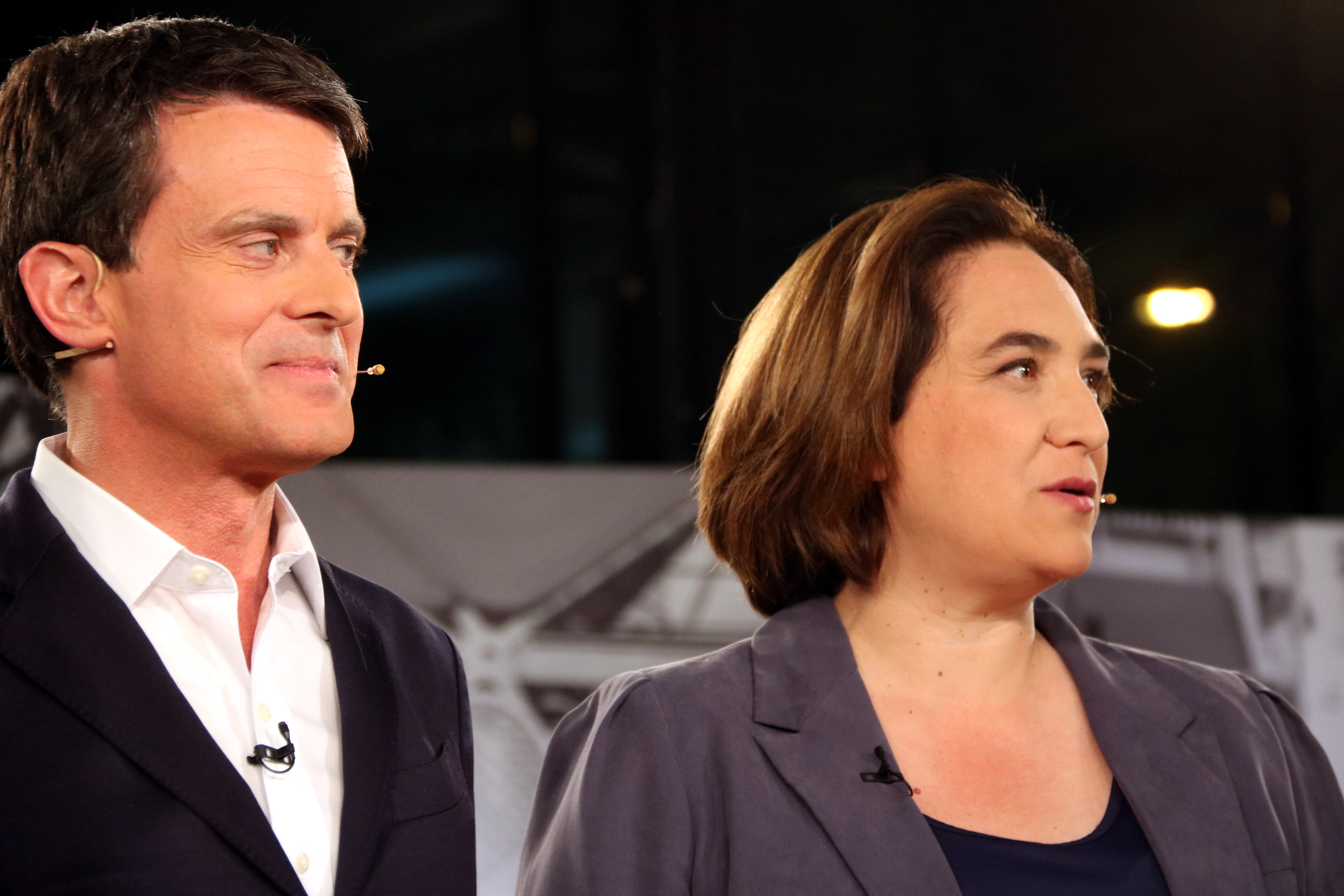The power struggle to appoint Catalan mayors is over, but it’s hard to tell who won
JxCat loses its local hegemony, the Socialists stay afloat, and ERC’s election results turn bittersweet after Ada Colau keeps hold of Barcelona

The election cycle is finally drawing to a close. After a string of polls at the Spanish, European, and local levels, the appointment of Catalonia’s 947 mayors has painted a clearer picture of the country’s power balance for the coming four years.
Yet pointing at winners and losers is not simple. Weeks of negotiations separate the local election on May 26 and the formations of new local governments last Saturday. We’ll explain the details of Catalonia’s local power struggle.
First things first: what happened in Barcelona?
Ada Colau, the anti-eviction activist turned Barcelona mayor in 2015, has surprisingly reclaimed her post at the helm of Catalonia’s capital city.
While her party, Barcelona en Comú (BComú), came second in the local election, she will stay in power for four more years thanks to the support of the Socialists (PSC), with whom she’ll form a coalition government, and from Manuel Valls, the former French prime minister who ran as mayoral candidate backed by unionist Ciutadans party.
So, Ada Colau will stay in power thanks to Manuel Valls. How come?
Valls wanted to avoid Barcelona having a pro-independence mayor at all costs. Despite harshly criticizing Colau during the election campaign, having her reelected seemed like a lesser evil in comparison with Ernest Maragall, the winner of the local election for Esquerra (ERC).

For weeks, BComú and ERC seemed willing to join forces in a coalition government, with Maragall going as far as offering to split the post of mayor in two-year terms with Colau. But neither ERC nor PSC—on opposite ends of the Catalan independence political axis—accepted Colau’s proposal to form a three-part left-wing government.
Faced with an uneasy dilemma, Colau asked party members before making a final decision. The results were clear: 71% of her followers preferred a deal with the Socialists over Esquerra. Valls’ votes, while unpleasant, were eventually seen by Colau as the lesser evil.
Ok, what about Catalonia as a whole?
If we look at the big picture, there are hardly any big winners: in order to assess each party’s performance, we need to look at their previous results and their expectations.
Junts per Catalunya (JxCat), the pro-independence party led by exiled former president Carles Puigdemont, remains the Catalan party with the most mayors: 370. Yet, the party has lost 60 mayors from 2015, including those of major towns.
More importantly, in some places JxCat was removed from power by its main pro-independence ally and current partner in the Catalan government, ERC.
How did ERC do in the local election?
ERC was indeed the most-voted party in the May 26 local elections, winning 819,845 votes throughout Catalonia. With each municipality electing a number of local councilors, who are then charged with appointing a mayor and creating the local government, ERC was also the party who won the most councilors: 3,107.
While ERC was the most-voted party in 342 towns, cross-party pacts allowed the pro-independence party to appoint 359 mayors. Unlike JxCat, the best news for ERC might be that the party is able to gain support from political rivals. Were it not for Colau, ERC would have been the main winner of election cycle.

It’s clear that pro-independence parties won in most Catalan towns, but what if we look at Catalonia’s most populated cities?
A different way of assessing the local election results is by looking at what parties will get to rule over the largest number of citizens. For instance, if we look at Catalonia’s 11 towns totalling more than 100,000 inhabitants, JxCat only secured two mayors—those of the list’s two smallest cities, including one of Catalonia’s four regional capitals, Girona.
ERC will get to rule in two other regional capitals, Lleida and Tarragona, with Barcelona being the fourth. But in all, the Socialists were undoubtedly the big winners in Catalonia’s biggest cities, with 5 out of 11 mayors.
Now that all towns in Catalonia and Spain have appointed their new mayors, what about the formation of a new government in Spain?
Good question. While the Spanish general election took place on April 28, negotiations to form a new government froze during the local election cycle. Two months on, the prospects of Pedro Sánchez staying in power as Spanish president are looking bleaker than on election night.
All possibilities of reaching a government deal with Ciutadans have vanished, after the party aligned itself with the right and far-right in most Spanish towns. Unidas Podemos, the Spanish group including Colau’s party, remain the Socialists’ closest ally, but together they fall short of votes after the anti-austerity party’s poor performance at the Spanish level.
In order to secure enough parliamentary votes to form a government, they depend on Catalan and Basque parties, among others. Pro-independence Esquerra, the most-voted Catalan party in the general election, had opened the door to facilitating a Socialist government, but with the wounds of the Barcelona mayoral election still fresh, this possibility is now up in the air.